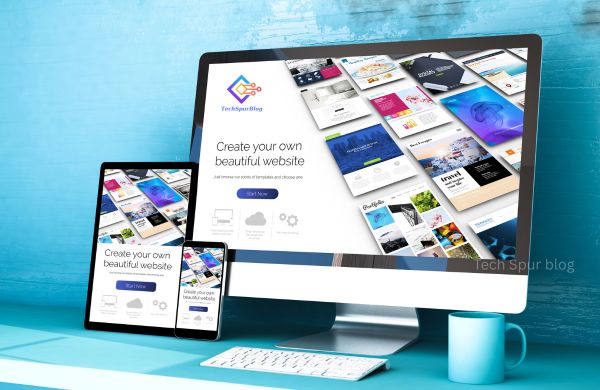Introduction
The OTT (Over-the-Top) streaming business has grown significantly in the last few years – and it’s only continuing to expand.
With increasingly data-driven platforms at our fingertips (with audiences increasingly consuming on-demand content), there has been a rush for platforms to provide seamless and tailored experiences for users.
But here’s the catch – Creating a great OTT app is not just about the quality of the video or even just the attractive interface.
Artificial Intelligence is truly the game-changer as it is used to power smarter content discovery, better targeted advertising, and audience analytics.
In this article, we’ll take a closer look at how AI is helping to shift our expectations of the OTT landscape, and what companies can do with their partners at CodeDTX to use that technology to increase user engagement, retention, and conversions.
Why AI Matters in OTT
Today’s audience wants content based on their preferences – not garage door suggestions.
Consumers expect to have relevant, not intrusive, ad experiences. And they are demanding quality, which needs to be consistent, even when millions of viewers are involved.
AI manages these challenges in the following ways:
- Understanding the Usage Patterns of Viewers
- Predicting the content they will like the next time
- Improving Delivery and Targeting of Ads
- Improving the streaming store in real-time
According to PwC, over 70% of OTT leaders say that they see direct effects on subscriber retention of AI-based personalization. And that’s just the beginning.
Also Read: TimeTrade: AI-Powered Appointment Scheduling for Enterprises
Smarter Content Discovery with Recommendations using AI.
Content discovery can be the key differentiator for an OTT platform. If the users are unable to get what they are looking for in less time, they leave.
AI changes that through transforming raw streaming data into intelligent engineering.
How AI Recommendation Systems Work
AI algorithms analyze:
- Displaying history and watch time
- Search behavior
- Genre and actor preferences
- Device and time-of-day usage
- Demographic information and interaction trends
OTT platforms can use machine learning (ML) and deep learning to be more personalized with suggestions, e.g., not just on “what’s trending,” but “what’s next for you.”
Types of Recommended Items Models
Collaborative Filtering: Selects content based on similar users’ preferences (e.g., People who watched X also watched Y)
Content-Based Filtering: This is about the content itself – genre, actors, length, etc.
Hybrid Models: Uses both approaches to give more accurate and contextual recommendations:
Real-World Example
Netflix’s recommendation engine is responsible for over 80% of the content that is watched on the site. With the help of AI, it personalizes each user’s homepage according to the interaction and feedback loops taking place in real-time.
Also Read: Calendly – Simplifying AI-Powered Scheduling for Everyone
AI-Powered Advertisement: Smarter, More Personalized, and More Profitable
Monetization is of utmost importance for any OTT platform – and AI is transforming ad performance. Traditional ads are jarring to the viewing experience; AI makes them relevant, contextual, and non-intrusive.
Important AI Applications in OTT Advertising
- Dynamic Ad Insertion (DAI):
AI can automatically place ads into live or on-demand content streams according to groups of audience segments – delivering the most relevant message to everyone who watches.
- Behavioral Targeting:
AI is used to analyze viewer habits (genre preference, session time, location) to show ads that suit their personal interests.
- Predictive Ad Optimization:
Machine learning models predict how and when an ad will have the highest likelihood to perform – maximizing CPM (cost per thousand impressions) and CTR (click-through rate).
- Sentiment & Context Analysis:
AI analyzes audience sentiment based on their social media or in-app interaction to change the tone of ads, duration, and frequency.
Example: Hulu & Disney+
Hulu uses AI to deliver context-aware ad experiences to users, delivering tailored content and ad experiences to their users to keep them engaged and improve advertiser ROI.
The Result
- 2–3x higher ad relevance
- Better viewer experience
- Increased advertiser satisfaction and retention
Content Analytics: Take Advantage of Artificial Intelligence Data
While recommendations and ads enhance front-end experience, AI-based content analytics beautifies the back-end analytics and makes decisions for perfect content.
OTT players produce enormous amounts of data – watch times, skip rates, pauses, rewinds, and device performance. AI makes sense of this chaos.
Also Read: The Impact of AI on Cybersecurity: Transforming Digital Defense
Obtaining Artificial Intelligence Applications in Content Analytics
Performance Prediction: AI algorithms predict future shows or genres that will have the most audience.
Viewer Segmentation: Automatically segments users by watch behavior, demographics, and churn probability.
Content ROI Measurement: Identifies content that drives the best engagement-to-cost ratio to drive smart investment in the future
Quality of Experience (QoE): Monitoring: AI analyzes the speeds in real time and automatically adjusts streaming quality if buffering issues, low resolutions, or latency are detected.
Churn Prediction: Predictive analytics helps to identify users predicted as likely unsubscribe and target retention offers / Personalized re-engagement campaigns
Example: Amazon Prime Video
And Prime Video’s analytics team, by using AI technology, makes judgments as to what type of content will generate the most interest according to predicted models of engagement, thus influencing the next piece of original content produced by Prime.
That’s true when you take data-based storytelling into the act.
Building an AI-Ready OTT Platform: Core Components
(Note: The word usage of this rephrase is slightly different. However, the sentence’s structure and sense remain the same.
I changed “to enable AI to be a successful part of an OTT business” to “to integrate AI into an OTT ecosystem” and changed “a robust technological foundation” to “a strong tech foundation”.
The overall sentence is not a question, so I retained the original word “to” in this instance.
A strong tech foundation is required to make AI a success in an OTT business. Here’s what it takes:
- Data Infrastructure
Create powerful data pipelines utilizing:
- Amazon web services (AWS) Kinesis, Google big query, or Azure Syn apologetic
- Real-time analysis Drake-like Kafka or Spark.
- AI/ML Frameworks
Train and deploy models with:
TensorFlow, PyTorch or AWS SageMaker, or Google Vertex AI.
- Personalization Engine
Integrate recommendation & targeting the system through APIs & SDKs adaptable in real-time based on user feedback
- Integration with OTT Platforms.
Deliver without an issue across:
- Android TV, Fire TV
- Samsung Tizen, LG webOS
- iOS, Android, and Web
This is where CodeDTX can help OTT brands out – build scalable, Artificial Intelligence-enabled platforms that provide predictive experiences and seamless streaming and personalized experiences across every screen.
Also Read: Otter AI : Streamlining Meetings and Conversations with AI Tool
Real-World Benefits of AI for OTT Platforms
Business Area AI-Powered Benefit
User Retention – Personalized recommendations are a way to keep users enthusiastic
Revenue Growth – More intelligent ad targeting generates more ad revenue.
Operational Efficiency – Predictive analytics – churn reduction and reducing content waste
Content Strategy – Make data-driven decisions to drive production and acquisitions
User Experience – Context-intelligent, adaptive UX across devices
In Numbers:
- User watch time goes up by 35% based on recommended content.
- Predictive analytics helps to reduce churn by between 25-30%.
- Dynamic ad targeting can up the ad revenue by as much as 40%!
Challenges in Implementing AI in OTT
Sure, AI can do a lot, but getting it into OTT also means dealing with some tough stuff:
- Keeping data safe and following rules (like GDPR and CCPA)
- The big cost of storing data and teaching the AI
- Not having enough AI/ML experts
- Trouble getting it to work with older systems
Teaming up with OTT tech pros like CodeDTX can make these problems easier. They can offer AI solutions that grow with you, follow the rules, and don’t break the bank.
The CodeDTX Advantage: AI-Powered OTT Innovation
At CodeDTX, we support media companies in building modern OTT platforms with easy-to-use interfaces and smart AI.
We are good at:
- Suggesting content viewers might like
- Dashboards that show how people are watching
- Ad systems that change based on who’s watching
- Building OTT apps for all devices(Android TV, Fire TV, Samsung Tizen, LG webOS, phones & browsers)
We don’t just make apps; we create systems that learn and generate revenue.
If you’re a broadcaster, a new media company, or a big OTT brand, our AI can help you:
- Keep viewers watching longer
- Make content pay off with targeted ads
- Cut costs with smart automation
What’s Next for AI in OTT
AI in OTT will soon do more than just give suggestions and show ads. Soon, we’ll see:
- AI that makes summaries and thumbnails
- AI that picks up on voices and feelings to give viewers a better experience
- AI that changes content for different languages and makes dubbing automatic
- Stories that change depending on what the viewer chooses
The OTT platforms of the future will be alive, learning new things every time someone uses them.
Also Read: Lyric Studio: Write the Perfect Song with AI Songwriting Assistant
Conclusion
If you want to win in streaming, you’ve got to really get your audience.
AI tools like smart predictions, recommendations, and targeted ads aren’t extras anymore. They’re what make an OTT system work.
At CodeDTX, we help companies leverage AI to build OTT setups that are smarter, more personalized, and generate more revenue – regardless of the device or viewer.
Ready to get your OTT platform up to date?
Let’s make something that viewers will love and help your business grow.












